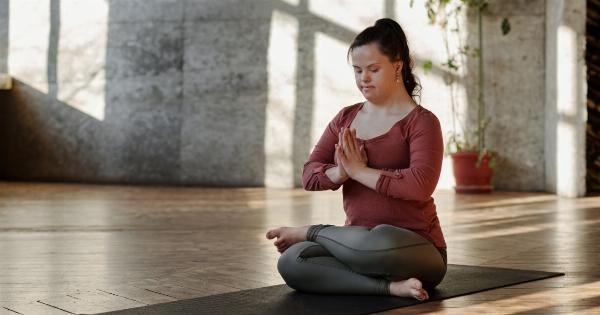As people around the world adapt to the new normal brought about by the global pandemic, finding ways to stay active and fit while staying at home has become a top priority.
With gyms closed and outdoor activities limited, many individuals have turned to home workouts as a way to maintain their physical well-being. However, exercising at home for extended periods can lead to musculoskeletal issues if proper precautions are not taken. In this article, we will explore how to prevent these issues and ensure a safe and effective workout routine during quarantine.
1. Warm-Up and Stretching:
Before delving into any exercise routine, it is crucial to warm up your muscles and joints. A proper warm-up increases blood flow and prepares your body for physical activity, reducing the risk of injury.
Here’s a simple warm-up routine you can follow at home:.
Start with a few minutes of light cardio: This can include jogging in place, jumping jacks, or simply marching in one spot. The aim is to elevate your heart rate gradually.
Dynamic stretches: Once you are warm, focus on dynamic stretches that involve continuous movement. Examples include walking lunges, arm circles, and high knees. These stretches help improve flexibility and range of motion.
By incorporating a warm-up and stretching routine into your home workouts, you are giving your body the necessary preparation to perform exercises with ease and reduced risk of injury.
2. Pay Attention to Proper Form:
When working out at home, without the guidance of a trained professional, it becomes even more important to pay close attention to your form.
Proper form ensures that you are targeting the right muscles and joints, reducing the strain on surrounding structures. Here are a few key points to keep in mind:.
Align your body: Maintain a proper alignment while performing exercises. For example, when doing squats, ensure that your knees do not extend beyond your toes, and your back remains straight.
Engage core muscles: Activating your core muscles during exercises helps stabilize your spine and improves overall body mechanics. Remember to brace your core by pulling your belly button towards your spine during movements.
Listen to your body: If you experience pain or discomfort during an exercise, it is a sign that your form may be incorrect. Modify the movement or seek professional guidance to avoid further issues.
Practicing proper form not only prevents musculoskeletal problems but also enhances the effectiveness of your workouts, maximizing the benefits you gain from exercising at home.
3. Gradually Increase Intensity:
While it may be tempting to push yourself to your limits during home workouts, it is crucial to gradually increase the intensity of your exercises.
Sudden spikes in intensity can put excessive stress on your muscles and joints, leading to strains, sprains, or other injuries. Follow these tips when progressing your workout routine:.
Start slowly: If you are new to exercising or coming back from a long break, begin with low-impact exercises. Focus on mastering the correct form before progressing to more challenging movements.
Progress gradually: Increase the duration or difficulty of exercises in small increments. For example, if you are comfortable with a specific exercise, you can add more repetitions or resistance bands to intensify the workout gradually.
Include rest days: Rest and recovery are crucial for preventing overuse injuries. Schedule regular rest days to allow your muscles and joints time to recover and rebuild.
By gradually increasing the intensity of your home workouts, you give your body sufficient time to adapt and reduce the risk of developing musculoskeletal problems.
4. Mix Up Your Workouts:
Repeating the same exercises day after day can lead to repetitive strain injuries and muscle imbalances. To prevent these problems, it is essential to diversify your workout routine. Here are a few suggestions to keep your workouts varied and engaging:.
Strength training: Include resistance exercises using weights, resistance bands, or your body weight to target different muscle groups.
Cardiovascular exercises: Incorporate activities such as jogging, dancing, or cycling to improve your cardiovascular health and endurance.
Flexibility exercises: Practice stretching and mobility exercises to improve flexibility and reduce the risk of muscle imbalances.
Try different online workout classes or explore various fitness apps to discover new exercises and keep your home workouts exciting and effective.
5. Take Breaks and Stay Hydrated:
During extended periods of exercise at home, it is crucial to take regular breaks and stay hydrated. Prolonged periods of physical activity without proper rest and hydration can lead to fatigue, decreased performance, and potential injuries.
Follow these essential tips:.
Listen to your body: Pay attention to signs of fatigue, such as muscle shaking, difficulty maintaining proper form, or feeling lightheaded. Take short breaks as needed to allow your body to recover.
Stay hydrated: Keep a water bottle close by and drink enough water throughout your workouts. Dehydration can affect your energy levels and impair your body’s ability to function optimally.
Taking regular breaks and staying hydrated are simple yet effective measures to prevent musculoskeletal issues and ensure a safe and productive home workout environment.
6. Invest in Proper Equipment:
While home workouts often require minimal equipment, investing in a few key pieces can enhance your exercise routine and reduce the risk of musculoskeletal problems. Consider the following essential items:.
Exercise mat: A proper mat provides cushioning and stability, protecting your joints and minimizing discomfort during floor exercises.
Resistance bands: These versatile bands add resistance to your exercises, allowing you to target various muscle groups and increase the effectiveness of your workouts.
Adjustable dumbbells: Opting for adjustable dumbbells enables you to modify the weight according to your strength and exercise needs, reducing the risk of strain or overexertion.
By investing in proper equipment, you can create a safer and more comfortable workout space at home, helping to prevent musculoskeletal issues and improve overall performance.
7. Seek Professional Guidance:
If you are new to exercise or experiencing persistent musculoskeletal issues during your home workouts, seeking professional guidance can be highly beneficial.
Online fitness trainers, physiotherapists, or exercise specialists can provide personalized advice and tailored exercise programs that suit your specific needs. These professionals can help address existing issues, correct form, and prevent further musculoskeletal problems.
8. Listen to Your Body and Rest When Needed:
One of the most important aspects of preventing musculoskeletal issues during quarantine is to listen to your body.
If you experience pain, discomfort, or unusual sensations during or after exercise, it is crucial to address them instead of pushing through. Rest when needed and consult a healthcare professional if necessary. Ignoring your body’s signals can worsen existing problems and lead to more severe injuries.
9. Focus on Recovery:
Post-workout recovery plays a significant role in preventing musculoskeletal issues. After an intense home workout, make sure to prioritize recovery to support your body’s healing process. Here are a few recovery strategies to incorporate:.
Cool down: Include a short cool-down period at the end of your workouts, which involves lower intensity exercises to gradually decrease your heart rate and bring your body back to a resting state.
Stretching: Engage in static stretches to improve muscle flexibility and prevent tightness.
Restorative practices: Consider incorporating activities such as yoga or Pilates to improve flexibility, mobility, and overall body balance.
Giving your body the time it needs to recover is essential for maintaining good musculoskeletal health, preventing injuries, and improving your overall fitness.
10. Stay Positive and Adapt:
Lastly, it is crucial to stay positive and adapt to the changing circumstances. Exercising at home can present new challenges, but it also offers opportunities to explore different workout styles and routines.
Be open to trying new exercises, adapting to your available space, and finding creative ways to stay active. By maintaining a positive mindset and being flexible, you can prevent musculoskeletal issues and continue your fitness journey effectively.
Conclusion:
Exercising at home during quarantine provides a convenient way to prioritize your physical well-being. However, it is essential to take precautions to prevent musculoskeletal issues.
By incorporating warm-up and stretching routines, practicing proper form, gradually increasing the intensity, diversifying your workouts, taking breaks, investing in proper equipment, seeking professional guidance when needed, listening to your body, and focusing on recovery, you can ensure a safe and effective home workout routine. Stay positive, adaptable, and prioritize your musculoskeletal health to make the most out of your fitness journey during these challenging times.






























